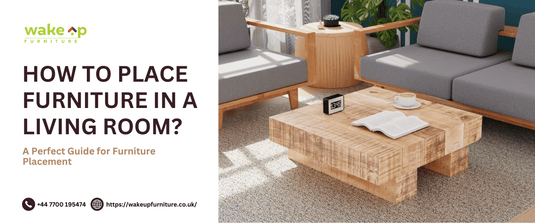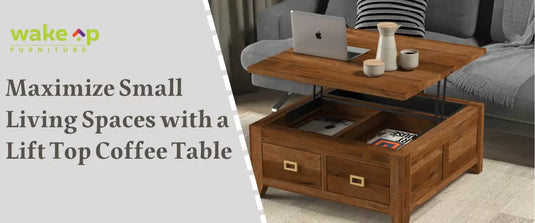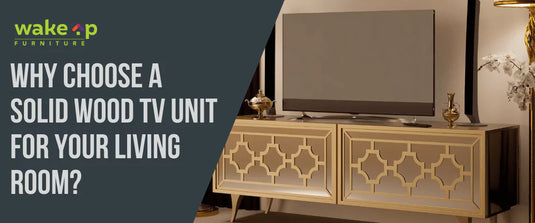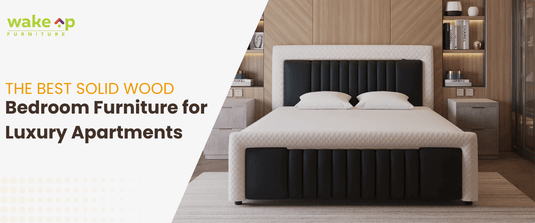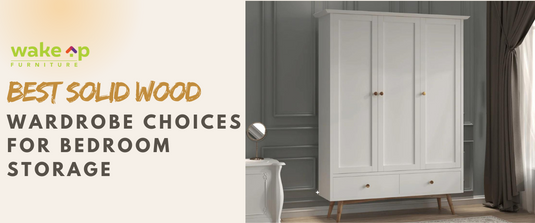Furniture placement in a living room isn't just about filling space; it's about creating an atmosphere, maximizing functionality, and allowing energy to flow freely. This essential element of interior design often goes underestimated, yet it can make or break the aesthetic appeal of your home. With the right positioning, you can transform a cluttered, uninviting room into a space that's not only stylish but also harmonious and cozy. Whether you're moving into a new home or looking to refresh your current living area, mastering the art of furniture layout is key. This detailed guide will walk you through the steps to achieve the ideal living room setup that suits your style and the room's architecture.
Understanding the Basics of Furniture Placement
Before you start moving sofas and tables, you need to lay the groundwork by understanding the basics of furniture placement. Here’s what you need to consider:
Analyze the Room’s Dimensions
Begin by measuring the size of your room and the features within, such as windows, doors, and architectural elements. This will help you understand the scale of the space and determine what size furniture can comfortably fit without overwhelming the room.
Traffic Flow
Consider how foot traffic moves through the room. You do not want to block pathways but rather create a clear and open layout that people can comfortably move through. Pathways should be at least 30 inches wide.
Focal Points
Identify the room's natural focal point, whether it's a fireplace, a large window with a view, or a media center. Your seating arrangement should be oriented towards this focal point to maximize visual appeal.
Balancing Act
Ensure there's a balance in the distribution of furniture. Mix large, heavy items with lighter, more delicate pieces. Symmetry can be pleasing, but don't be afraid to play with asymmetrical layouts for added interest.
Functionality
Each room serves a different purpose. Determine what you want to do in your living area and tailor the furniture to facilitate those activities. If it's a space for reading, make sure you have adequate lighting and a comfortable armchair.
Pro Tips on Sofa Placement
The sofa is often the largest piece of furniture in the living room and usually dictates the space's entire layout. Here are some pro tips to consider when placing your sofa:
Which Direction Should Your Sofa Face?
The sofa should ideally face the room's focal point. This could be a fireplace, a piece of art, a television, or any feature that draws the eye. This creates a welcoming and conversation-friendly environment.
The 2/3 Rule for Sofas
When it comes to size, a good rule of thumb is to have the sofa take up two-thirds of the wall it's placed on. Pair it with other seating options, such as armchairs or a loveseat, to complete the living room ensemble.
Should the Sofa Face the Door?
In feng shui, it's often recommended to avoid positioning a sofa with its back to the door, as it can make people feel vulnerable. However, in some cases, this may be your only option. In that case, use a console table or shelf to create a sense of a barrier behind the sofa.
Common Mistakes to Avoid
Some placement mistakes can disturb the room's balance and flow. These include pushing all furniture against the walls, floating items in the center of the room with no anchor, and crowding too many pieces in one area.
Creating a Harmonious Seating Area
Now that you have your sofa in place, it's time to create a seating area that's both functional and aesthetically pleasing.
The Main Gathering Point
Your main seating area should be placed so that all elements face each other or are oriented towards the room’s focal point. This arrangement is conducive to conversation and creates a sense of intimacy.
Utilizing Area Rugs
An area rug can define and anchor the seating area within a larger room. Ideally, the front legs of the sofa and chairs should rest on the rug, or at least the front two feet of the furniture should.
Accent Chairs and Side Tables
Incorporate accent chairs and side tables to offer additional seating and surfaces for drinks and books. These should be strategically placed to complement the sofa and not create a cluttered look.
The Relationship Between Console and Television
For those with a television as their focal point, the relationship between the console and television is important in the living room layout.
Ideal Console Placement
Your TV console should be centered and preferably at eye level for comfortable viewing. If you have multiple consoles or shelves, make sure they provide ample storage and are proportionate to the size of the TV.
Incorporating Decor
Use your console as a showcase for decorative items, but keep the clutter to a minimum. Balance the space with a mix of decorative elements and functional items, like baskets for storage or a lamp for additional lighting.
Versatile Side Tables and Coffee Tables
Side and coffee tables are more than just functional furniture; they’re also an opportunity to add dynamic to your living room space.
Side Table Placement
Position side tables within easy reach of seating areas but not in the way of the primary traffic flow. These versatile pieces can be moved around as needed, so feel free to experiment with their placement.
Coffee Table Style and Proximity
Your coffee table should be about one-half or two-thirds the length of your sofa and about the same height as the seat cushions. This proximity ensures that the table is accessible to all users.
Integrating Storage Units and Bookcases
To fully utilize your living room, integrate storage units and bookcases into your furniture layout.
The Role of Bookcases
Bookcases can act as room dividers or contribute to an open-concept layout. They offer vertical storage and can be used to display books, decorative items, and plants. Ensure they are secured to the wall for safety.
Multi-Purpose Storage
Opt for storage units or ottomans that double as a coffee table to maximize space. These pieces are great for hiding away items you don't want in plain sight, which can help to keep your living room looking neat and tidy.
Lighting Matters
Lighting is a critical element when designing a living area. Consider the natural light, and then supplement it with artificial lighting to set the right mood.
Balancing Natural and Artificial Light
Use a mix of floor and table lamps, plus overhead lighting, to create a balanced and inviting environment. Dimmer switches can offer versatility and help to control the ambiance.
Task and Ambient Lighting
Place lamps where they’re needed most for reading and other tasks. For general illumination, an upward-facing torchiere can do the trick, while adjustable arm lamps are perfect for tasks and activities.
Personal Touches and Styling
Finally, don't forget to add personal touches and style to your living room. Your space should speak to your personality and be a reflection of your lifestyle.
Incorporating Art and Decor
Integrate artwork and decorative items that you love. Group art on walls at eye level to create an inspiring gallery, and use decorative items to add color and texture throughout the room.
Personalizing with Textiles
Throw pillows, blankets, and curtains can add a layer of warmth and comfort to your living room. Choose textiles that complement your color scheme and the room’s overall design aesthetic.
Reposition and Reassess Regularly
Don’t be afraid to change up your living room layout from time to time. It keeps the space feeling fresh and can be a fun way to experiment with different furniture arrangements.
To sum up, a well-thought-out furniture placement in your living room can elevate your home's style and functionality. With these guidelines and your personal taste as a compass, you can create a living space that's as inviting as it is aesthetically pleasing. Remember, every space is different, so allow yourself the flexibility to play around with the layout until you find the perfect configuration.
